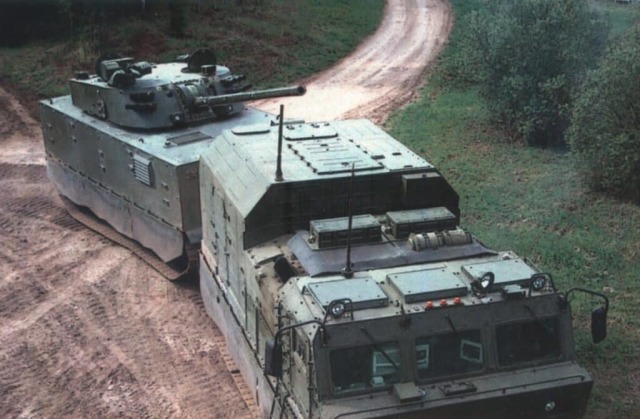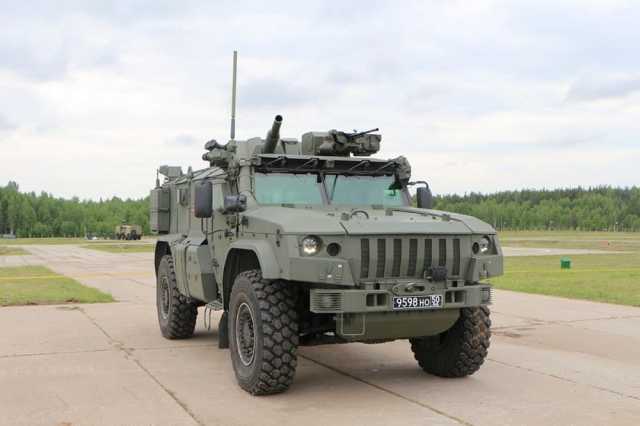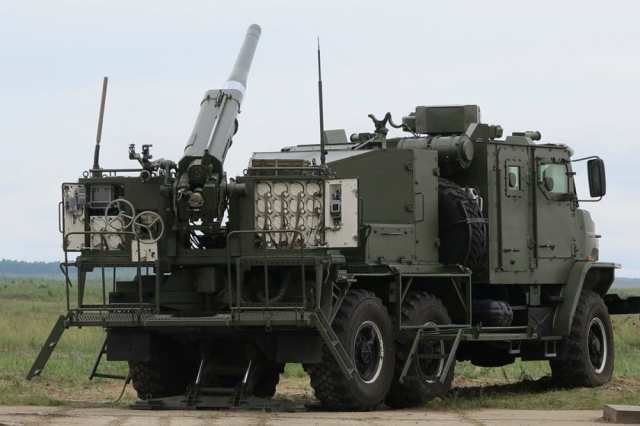The first production cars may appear as early as this year.
At the Army-2022 forum, which takes place in the Moscow region on August 15-21, Uralvagonzavod not only presented updated models of self-propelled artillery guns "Magnolia", "Phlox" and "Drok", but also announced the start of serial production of the first two systems. Perhaps the decision to launch them into a series to some extent was provoked by the experience of combat operations in Ukraine, which showed the demand for highly mobile systems, and in calibers even less than 152 / 155mm.
The hundred-and-twenty-millimeter self-propelled gun "Phlox" developed by JSC "Central Research Institute "Burevestnik" is based on a three-axle truck "Ural-4320". The gun fires both 120 mm artillery mines (their reserves in Russia are very large) and shells with rifling. Mines in flight do not rotate and are stabilized due to the tail, and the shells rotate, which is why they are stabilized by rotation and may have a slightly higher accuracy. It is worth noting that the Russian army also has guided ammunition in the 120-millimeter caliber.

"Magnolia" is designed to work in the Arctic. The experience of the Second World War showed that in the tundra conditions of the Arctic (as well as in swampy terrain), conventional armored vehicles are often insufficiently mobile Image source: The Russian Ministry of Defense Gun makes eight to ten shots per minute, a machine gun with 28 ammunition in a ready stack is engaged in reloading.
Another 52 shells are a portable reserve, from which you can manually replenish the laying in the intervals between firing. It is capable of firing along a very steep trajectory (up to 80 degrees), due to which it can be used even in dense buildings (for shooting "through the building"). For self-defense, the 20-ton car has a heavy machine gun and light armor.
"Magnolia", developed by the same Central Research Institute, is very different in chassis: this is a two-link tracked transporter DT-30MP "Vityaz". It can fire similar 120-millimeter ammunition at a range of up to ten kilometers and from an artillery point of view is very similar to the Phlox. However, the chassis with a low specific load allows it to move through swamps and tundra — this self-propelled gun is suitable for Arctic conditions.
The forum also showed an 82-mm self-propelled mortar "Drok", created on the basis of the Typhoon-airborne machine, but nothing is said about its mass production. The weight of the "Drok" is 16 tons, which is comparable to the "Phlox". However, he has half as much ammunition, and the mass of the mine is not much higher than three kilograms — against a dozen and a half kilograms of 120-millimeter systems.

"Drok" in theory was developed for the Airborne forces Image source: The Ministry of Defense of Russia All three systems were created to strengthen the artillery of the battalion level.
As the fighting in Ukraine has shown, the closer the artillery is to the battalion link, the faster it turns out to use it for targets directly on the battlefield. However, the battalions of the Russian army normally do not have their own heavy artillery systems. Against this background, equipping them with new self-propelled guns with powerful ammunition (including guided ones), and even capable of quickly changing positions immediately after they carry out a fire raid, would be very in demand.

